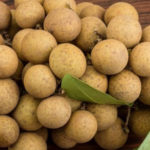Characteristics, Structure, and Nutritional Components of Eggs
1. Characteristics of Eggs
Eggs are oval-shaped and come in different types such as chicken eggs, duck eggs, and quail eggs. They are a valuable source of protein and nutrition for humans.

2. Structure of Eggs
Eggs have a simple structure consisting of the eggshell, shell membrane, egg white, and egg yolk. In the case of chicken eggs, the egg white accounts for about 55.8% of the weight, the egg yolk accounts for about 31.9% of the weight, the eggshell accounts for about 11.9% of the weight, and the shell membrane accounts for about 0.4% of the weight.

3. Nutritional Components
Eggs are rich in important nutrients including protein, fats, vitamins (A, E, K, B2, B12) and minerals (iron, folate, biotin). A 100g chicken egg contains approximately 155 Kcal, 12.5g of protein, 11.4g of fat, and various other nutrients.

4. Why Are Chicken Eggs Bigger at One End?
The unequal size of the two ends of a chicken egg is due to the formation process. One end of the egg is subjected to pressure from the oviduct, which pushes it out. This end becomes compressed and enlarged, while the other end points down to the lower part of the oviduct, causing it to shrink.

How to Choose Fresh Eggs and Their Storage
When choosing fresh eggs, consider the following tips:
1. Observe the Eggshell
Fresh eggs have even, dark brown shells without cracks or spots. Eggs that have been stored for a longer time may have lighter-colored shells and more spots. However, for free-range eggs, shell color may vary and does not necessarily indicate freshness.

2. Touch the Eggshell
Fresh eggs have a slightly rough and sticky surface. Eggs that have been stored for a longer time have a smoother surface.

3. Hold the Egg up to the Light
Hold the egg up to a light source to check for a small air chamber, a rounded egg yolk in the middle of the egg, and clear egg white. These indicate that the egg is fresh. If the air chamber is large and the yolk appears red or floating, the egg may be old.

4. Gently Shake the Egg
Shake the egg near your ear. If you hear no sound, the egg is fresh. If you hear a sound, the egg may be old or spoiled.

Delicious Egg Dishes and Egg Storage
To preserve the nutritional value of eggs, follow these storage tips:
1. Delicious Egg Dishes
Eggs can be used in a variety of delicious dishes and drinks. They are versatile and can be incorporated into daily meals.

2. Egg Storage Methods
If you have a refrigerator:
- Clean the eggs and wrap them in newspaper before placing them in the refrigerator door shelf. Alternatively, put them in a plastic bag on the door shelf. Use eggs purchased earlier first.

If you don’t have a refrigerator:
- Apply vegetable oil to the eggshells and store them at a temperature of 25-32 degrees Celsius for up to 36 days.
- Use a foam box with sawdust or salt, or store the eggs with legumes or dry tea leaves, to extend the storage time to several months or even a year.
Differentiating Between Fake Eggs and Bleached Eggs
To differentiate between fake eggs and real eggs:
1. Differentiating Fake Eggs
Crack the egg and smell it. Natural smell indicates a real egg, while a strange or chemical odor suggests a fake or old egg.

2. Differentiating Bleached Eggs
Bleached eggs may have slightly white or pinkish shells with a dull appearance. They are often larger in size compared to free-range eggs. Bleaching is a commercial practice and can be detected through shell color and size.




































